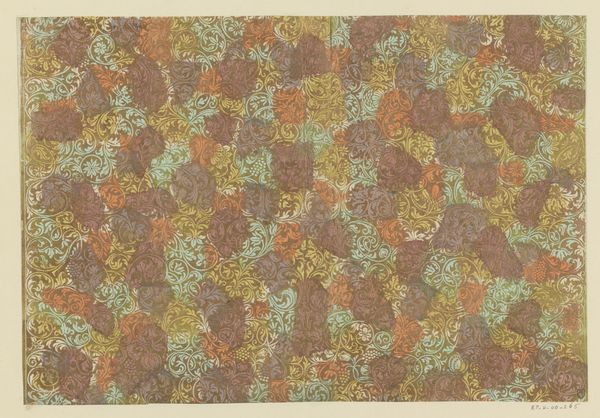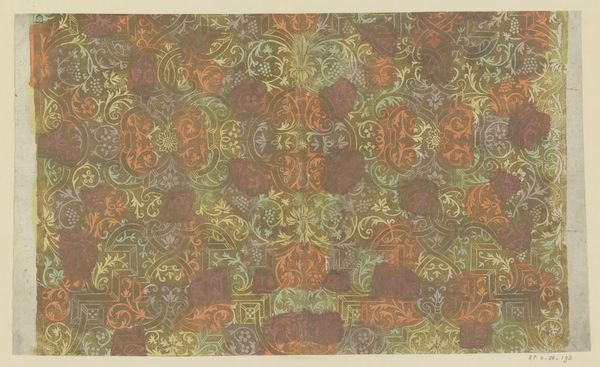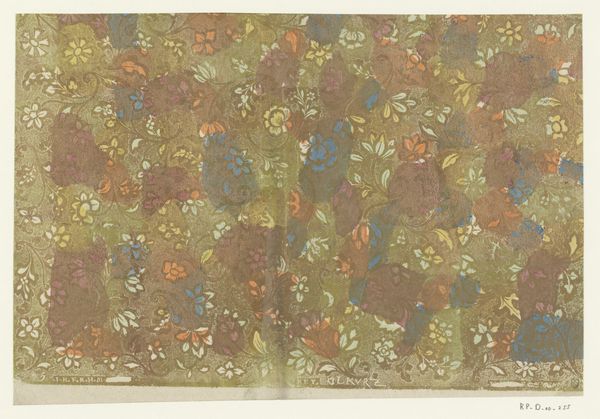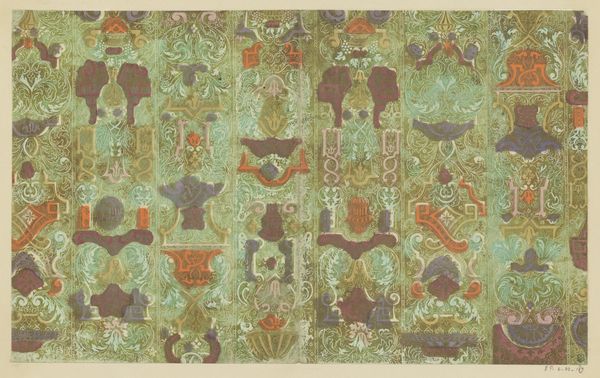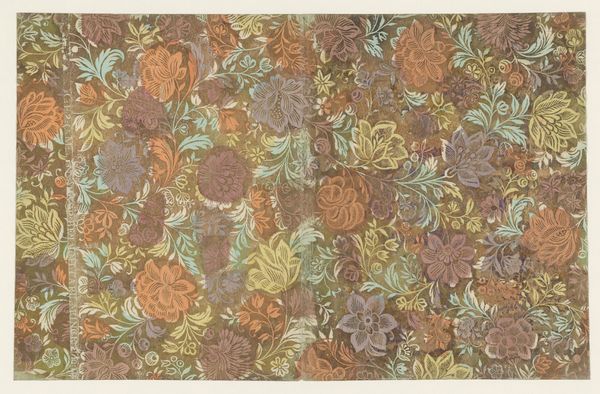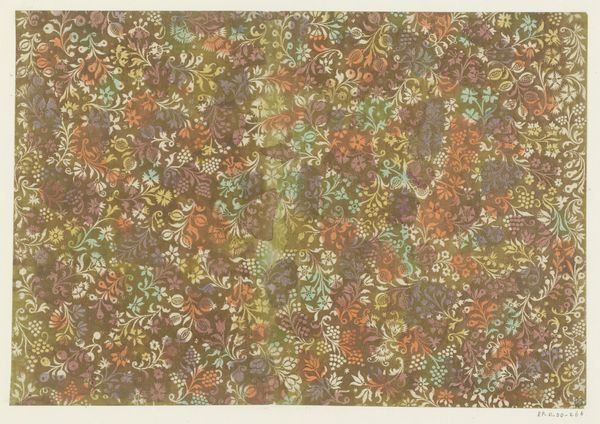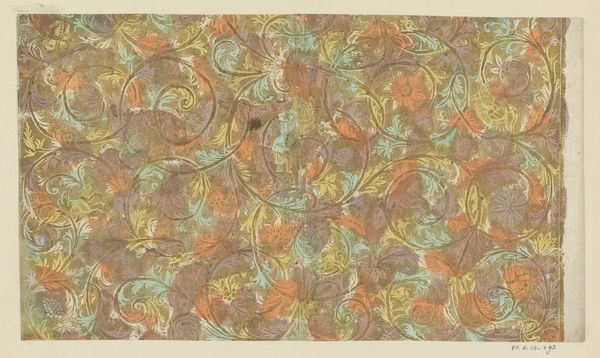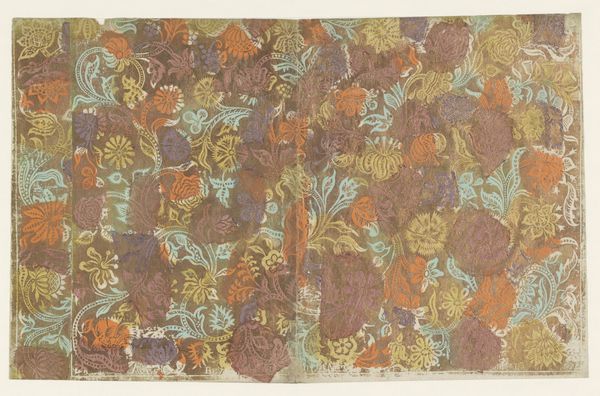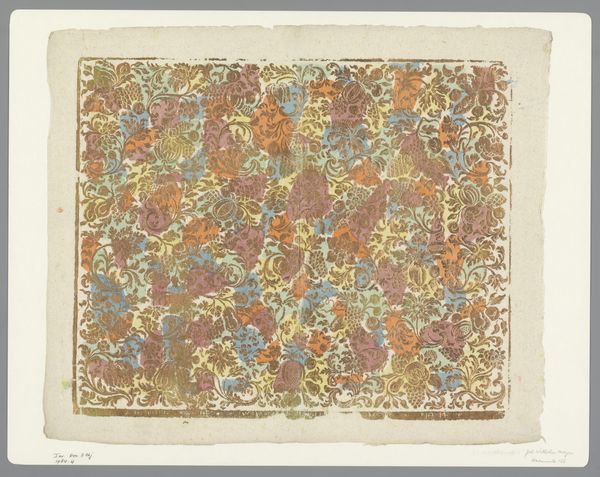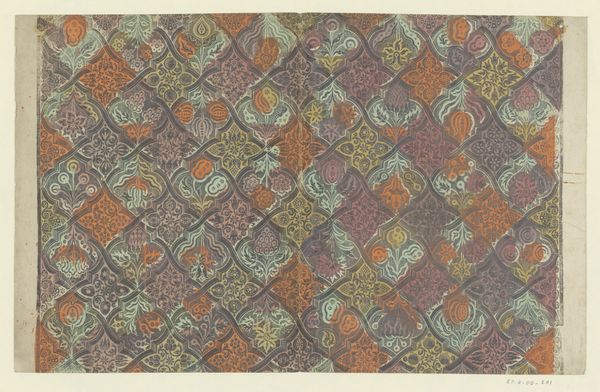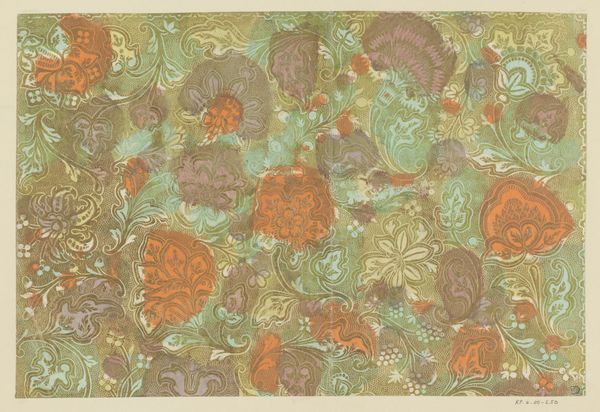
Dimensions: height 261 mm, width 425 mm
Copyright: Rijks Museum: Open Domain
Curator: Ah, yes, here we have a striking example of late 18th-century ornament, created sometime between 1750 and 1794 by Johann Carl Munck. It's titled "Blad met Lodewijk XIV-ornament, bandwerk, ranken met vruchten," or "Sheet with Louis XIV ornament, band work, tendrils with fruits." Munck worked with drawing and printmaking to bring this about. Editor: My first thought? It’s like peering into a forgotten garden! So dense, those curling vines… but in such faded tones, almost melancholic. I can imagine this was once bursting with color; what I find now is an incredible amount of pattern. Curator: You've picked up on some key visual elements there. This design draws heavily from the Baroque style, particularly in its use of exuberant, ornate details. Consider the swirling acanthus leaves, the precisely rendered fruit, the complex interweaving of lines—all characteristics of that period. We might see this as a pattern repeating, yes, but let us analyze that grid system hidden between. Editor: Precisely! And notice how, beneath the organic flow, there’s this strict geometric underlay; squares meeting curlicues... How does one impose so much order and freedom at the same time? It makes me feel like something could burst from the seams. I almost wonder what kind of room, a formal dining hall maybe, might this decorate to offset or heighten its ambience? Curator: Exactly! The intent here seems to strike a balance, maybe even a tension, between nature and artifice, so we also need to ask, how might this sheet have been used? This would be an accessible and inexpensive prototype. We need to ask how widely such images are used to distribute aesthetic sensibilities in different populations. Editor: So it's less about a singular meaning, and more about how the design, that interplay of geometric structure with natural motifs, gets replicated and repurposed across the cultures and places... Well, I've never seen a Baroque garden quite like that; a feast, I suppose, for more than just the eyes. Curator: Indeed, a feast for the intellect and a reminder that design isn't just about looking pretty; it reflects the values and structures of its time, and offers glimpses into futures dreamed, rendered and re-rendered over time.
Comments
No comments
Be the first to comment and join the conversation on the ultimate creative platform.

